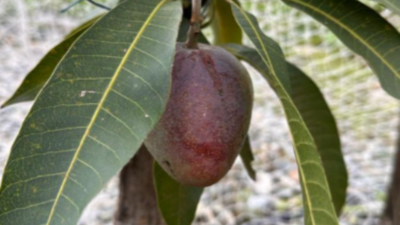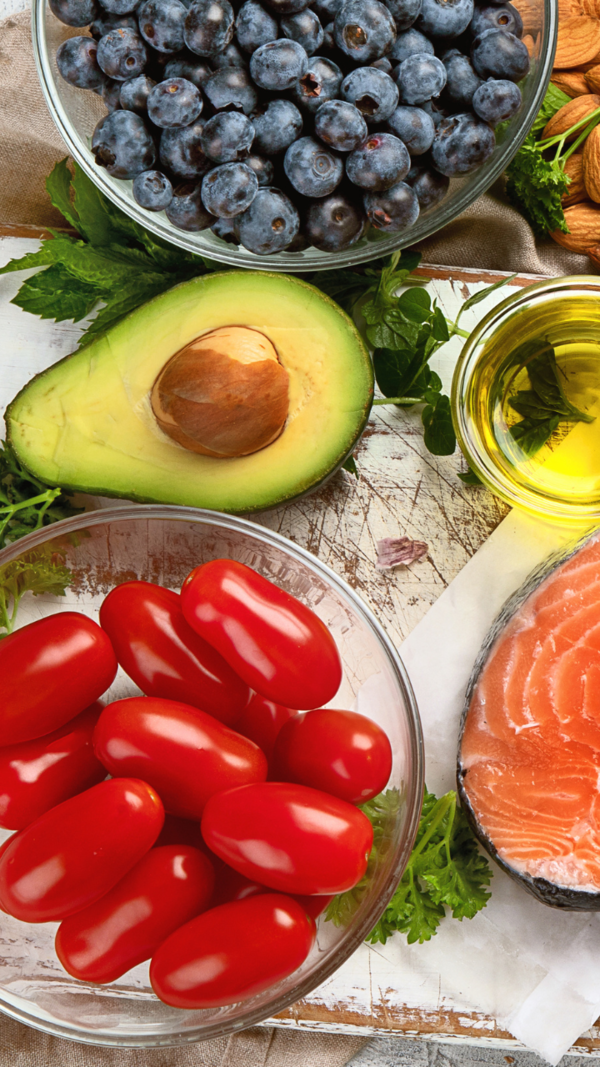Trending
Miyazaki, priciest of mango varieties at Rs 2k per kg, is a luxury
Miyazaki mangoes from Japan are now being grown in India. These expensive mangoes cost Rs 2,700 per kilogram internationally. With growing interest and demand, nurseries provide saplings to farmers across India. However, the yield is low and the plants require careful monitoring. Over time, Miyazaki mangoes may become localised in India due to suitable growing conditions.
PUNE: A flaming red mango is slowly finding growers in the Indian market, never mind that it costs Rs 2.70 lakh per kg in the international market and sells at over Rs 2,000 per kg in the country. So, buyers would be few and far between.
From dashari to langda to malda and alphonso, in a country where the mango's allure is phenomenal as are its varieties, the Miyazaki mango originally from Japan, is manna from heaven.
Unlike regular green or yellow mangoes, its skin turns from purple to a flaming red when ripe.
Experts say that a few bites of this unusual mango could help boost your immune function, improve iron absorption, and aid eye health.
Balasaheb Dhakane, owner of Rudra Agro Nursery in Alandi near Pune said, "They are not grown in large quantities in India, but as awareness is increasing so is the demand. We get calls from all over India – especially from the South and Gujarat for Miyazaki saplings."
While some nurseries in and around Pune cater to the demand for Miyazaki, a large chunk of nurseries are located in West Bengal.
Nizam-ul-Haq, who runs Bengal Traditional Nursery in Kolkata, said he sells 2,000-3,000 Miyazaki saplings every month.
"Most of the mother plants come from Bangladesh and then we create saplings from the seeds of these fruits," he said.
Manish Deshwal, who runs Kisan Farming in UP's Meerut, said he gets big orders from farmers in different parts of the country, who want to experiment with Miyazaki mangoes. "Our customers who approach us usually want over 500 saplings," he said.
Konkan farmer Murli, who has a mango farm, is now experimenting with the Miyazaki variety. "This is my first attempt at growing it. I have heard that the plant is extremely prone to pests and diseases so it has be monitored regularly. It will take some time before the saplings start fruiting," he said.
The saplings are expensive to buy. A three to four ft sapling could cost in the range of Rs 850–Rs 1,200 in Maharashtra. Prices are lower in Kolkata.
The yield per tree is not as high as a normal mango tree, just one-third. The harvest season is summer, with produce likely to peak in April.
Farmers are aware that Miyazaki mangoes will not fetch them many customers as the prices are exorbitant in India. In Japan, these mangoes are usually bought in auctions and are used for gifting.
"These mangoes are grown in greenhouses in Japan and in temperature controlled environments. We place a protective cover on the mangoes and tie them to the stick so that they don't fall on the ground and get damaged," Dhakane said.
Wagholi resident Shyamali Sanyal recently placed an order for Miyazaki saplings from a Kolkata-based nursery.
"I purchased around 17 plants from the Kolkata nursery. The Miyazaki sapling cost me around Rs 300 for a three feet sapling. I have heard this plant is prone to diseases so I will have to be careful with it," she said.
Indian Soil Just Right
Miyazaki mangoes got their name from a city in Japan where they are grown
Miyazaki mangoes are rich in antioxidants, beta-carotene, folic acid, Vitamin A, Vitamin C
Each mango typically weighs about 300-350g
These mangoes have still not made it to local fruit markets as commercial production has still not begun
However, farmers feel that over the next few years, Miyazaki could become localised as parts of India have the perfect growing conditions
But, at present, it truly has become a symbol of luxury, prestige and desirability
End of Article
FOLLOW US ON SOCIAL MEDIA









